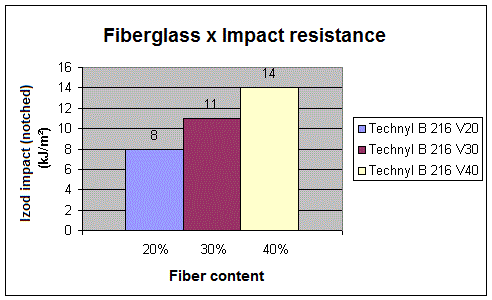COMPOUNDS - THE USE OF PLASTIC TO REPLACE METALS
In the last decade there was a real revolution in the matter of the materials used in the industry, in good amount of metals were replaced by engineering plastics such as nylon, polycarbonate, polyacetal, ABS, blends etc. As metals are combined to form metal alloys taking advantage of the properties of two or more metals, plastics are also combined to form blends and can be reinforced with various types of fibers and other mineral fillers, improving their mechanical properties . It's what we call composites or compounds.
What are composites, and what is the difference between compounds and composites?
There is no difference between compound or composite, what happens is that the term "compound" is more used in the industrial environment while the "composite" is more used in the academic environment. However, a compound (I will use this term because it is used in the industry) is the combination of two or more materials immiscible with each other in order to achieve a combination of properties.
This combination can be between metals, plastics, minerals, woods and etc, but the focus here will be on plastics.
Well, you must be asking yourself, "So when I mix PP with PE am I producing a compound?" The answer is no, because in this case a single material, a copolymer polypropylene, is being formed. In the case of the compounds, as has already been said, it is necessary to have two or more materials immiscible with each other - that is, two or more phases.
An example of what a compound would be is any polyamide filled with fiberglass, rather it is a compound because there are two phases: the matrix (polyamide) and the fiber; and although they work together they continue in their original forms. In place of the fiber we could also put talc, flame retardants or any other non-polymeric filler that we still would have a compound.
What is the function of matrix and fiber within a compound?
Although I have said that a compound need not necessarily be matrix-fiber, it cannot explain - at least in this article - the function of each filler that can be added in a plastic (flame retardant, talc, thermostabilizer etc) , So I'm going to focus on fiber. It is important to emphasize for those who do not know filled plastics that the ratio of fiber to matrix is around 20 to 30% (up to 50%), which is a lot when compared to other additives for plastics that are no more than 5%.
The basic function of the fiber in the composite is to provide flexural strength, tensile strength and hardness to the polymer. But there are other properties and features that come from "toast":
- Weight reduction because the fiber has low apparent density;
- Cost reduction (if the fiber is cheaper than the polymer);
- Promotes electrical conductivity or insulation, depending on fiber.
And in the case of the matrix, its basic function is to be the base of the compound, besides being the vehicle that will transport the fiber and conform it inside a mold when it comes to injection molding.
Going deeper into the theory of matrix functions we can cite:
- The matrix holds the fibers and transfers the charge to them;
- The matrix isolates the fibers, cushioning the movement of each separately and reducing or eliminating the crack propagation.
Relation between amount of fiber X resistance to impact
Increasing the amount of fiber may not make the compound less impact resistant, in contrast, in some thermoplastics (we are still not talking about thermosets) the impact resistance increases along with the amount of fiber added. This effect is more noticeable in polyamides, showing to be a type of material that accepts very well fillers and reinforcements.
In the chart below, we can see that the impact strength of the polyamide compounds increases almost proportionally to the fiberglass content. Of course, these tests were carried out on standard, flat specimens. Anyone who has experience in the manufacture of polyamide products knows that curved or insert pieces tend to form points of tension which, together with the hardness provided by fiberglass, can provide cracking and require efficient hydration so that the material don’t get "dry" - which generates time and therefore increases the cost.
Bibliography:
HARPER, Charles A.; PETRIE, Edward M. Plastics Materials and Process: A Concise Encyclopedia. Hoboken: John Wiley & Sons, Inc., 2003.
CANEVAROLO JR., Sebastião V. Ciência dos Polímeros: Um texto básico para tecnólogos e engenheiros. 2.ed. São Paulo: Artliber Editora, 2002.
WIEBECK, Hélio; HARADA, Júlio. Plásticos de Engenharia: Tecnologia e Aplicações. São Paulo: Artliber Editora, 2005.
© 2010-2025 - Tudo sobre Plásticos.
All rights reserved.
Home
-
Privacy policy
-
Contact







